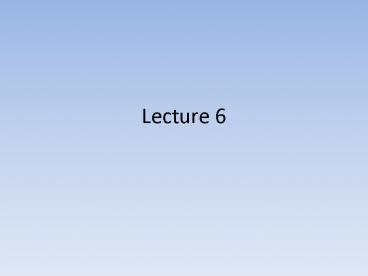RSA Use in Encryption - PowerPoint PPT Presentation
Title:
RSA Use in Encryption
Description:
Lecture 6 RSA Use in Encryption to encrypt a message M the sender: obtains public key of recipient PU={e,n} computes: C = Me mod n, where 0 M – PowerPoint PPT presentation
Number of Views:119
Avg rating:3.0/5.0
Title: RSA Use in Encryption
1
Lecture 6
2
RSA Use in Encryption
- to encrypt a message M the sender
- obtains public key of recipient PUe,n
- computes C Me mod n, where 0Mltn
- to decrypt the ciphertext C the owner
- uses their private key PRd,n
- computes M Cd mod n
- note that the message M must be smaller than the
modulus n (block if needed)
3
RSA Example - En/Decryption
- sample RSA encryption/decryption is
- given message M 88
- Publish public key PU7,187
- Keep secret private key PR23,187
- encryption
- C 887 mod 187 11
- decryption
- M 1123 mod 187 88
4
Assignments
- Perform encryption and decryption using RSA
algorithm, as in Figure 1, for the following - p 3 q 11, e 7 M 5
- p 5 q 11, e 3 M 9
- In a public-key system using RSA, you intercept
the ciphertext C 10 sent to a user whose public
key is e 5, n 35. What is the plaintext M?
5
Why RSA Works
- because of Euler's Theorem
- aø(n)mod n 1 where gcd(a,n)1
- in RSA have
- np.q
- ø(n)(p-1)(q-1)
- carefully chose e d to be inverses mod ø(n)
- hence e.d1k.ø(n) for some k
- hence Cd Me.d M1k.ø(n) M1.(Mø(n))k
- M1.(1)k M1 M mod n
6
Efficient Encryption
- Encryption uses exponentiation to power e
- Hence if e small, this will be faster
- often choose e65537 (216-1)
- also see choices of e3 or e17
- But if e too small (eg e3) can attack
- using Chinese remainder theorem 3 messages with
different moduli
7
Efficient Decryption
- Decryption uses exponentiation to power d
- this is likely large, insecure if not
- can use the Chinese Remainder Theorem (CRT) to
compute mod p q separately. then combine to get
desired answer
8
Exponentiation
- can use the Square and Multiply Algorithm
- a fast, efficient algorithm for exponentiation
- concept is based on repeatedly squaring base
- and multiplying in the ones that are needed to
compute the result - look at binary representation of exponent
- only takes O(log2 n) multiples for number n
- eg. 75 74.71 3.7 10 mod 11
- eg. 3129 3128.31 5.3 4 mod 11
9
Exponentiation
- The algorithm for computing ab mod n
- The b integer is expressed as as binary number
bk , bk-1 ,, b0
10
Example
- Get 7 5 mod 11 ?? ? ab mod n as in th
algorithm - So b 5 ? 101
- n 11 a 7
- The final result is 10
1 0 1
b0 b1 b2
d c Ask? b(k) k
1 0
1 0 2
7 1 Yes b2 1
5 2 1
No
3 4 0
10 5
11
Example
- Get 10 3 mod 60 ?? ? ab mod n as in th
algorithm - So b 3 ? 11
- n 60 a 10
- The final result is 40
1 1
b0 1b2
d c Ask? b(k) k
1 0
1 0 1
10 1 Yes b1 1
40 2 0
40 3 Yes b0 1
12
RSA Security
- three approaches to attacking RSA
- brute force key search (infeasible given size of
numbers) - mathematical attacks (based on difficulty of
computing ø(N), by factoring modulus N) - timing attacks (on running of decryption)
13
Factoring Problem
- mathematical approach takes 3 forms
- factor Np.q, hence find ø(N) and then d
- determine ø(N) directly and find d
- find d directly
- currently believe all equivalent to factoring
- have seen slow improvements over the years
- as of Aug-99 best is 130 decimal digits (512) bit
with GNFS - biggest improvement comes from improved algorithm
- cf Quadratic Sieve to Generalized Number Field
Sieve - barring dramatic breakthrough 1024 bit RSA
secure - ensure p, q of similar size and matching other
constraints
14
Summary
- have considered
- prime numbers
- Fermats and Eulers Theorems
- Primality Testing
- Chinese Remainder Theorem
- Discrete Logarithms
- principles of public-key cryptography
- RSA algorithm, implementation, security































